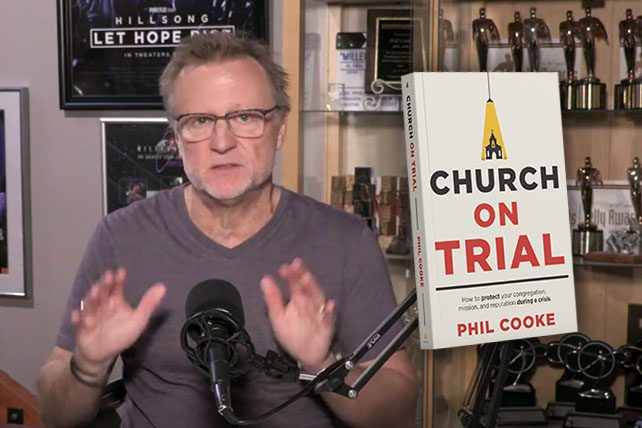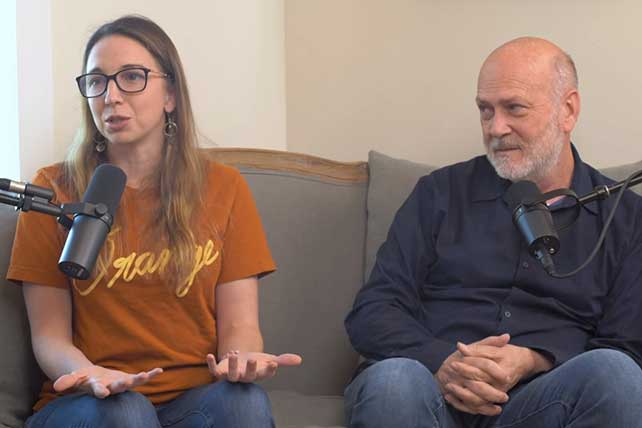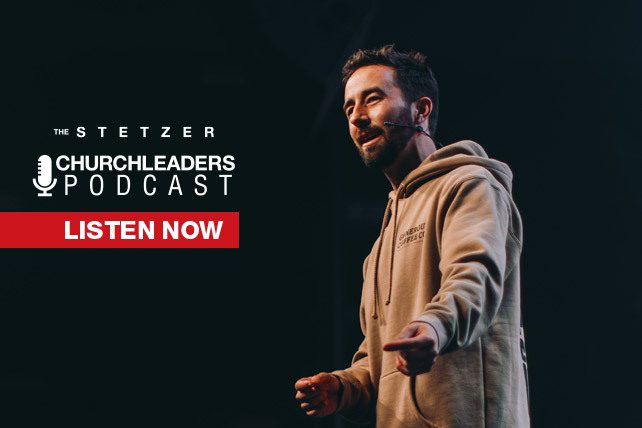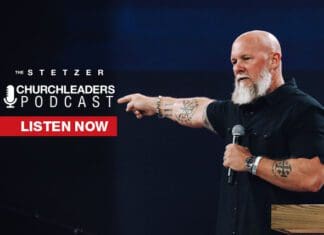EPISODE 470-FINAL-Ryan Wekenman.mp3: this mp3 audio file was automatically transcribed by Sonix with the best speech-to-text algorithms. This transcript may contain errors.
Voice Over:
Welcome to the Stetzer Church Leaders Podcast, conversations with today’s top ministry leaders to help you lead better every day. And now, here are your hosts, Ed Stetzer and Daniel Yang.
Daniel Yang:
Welcome to the Sister Church Leaders Podcast, where we help Christian leaders navigate and lead through the cultural issues of our day. My name is Daniel Yang, national director of Churches of Welcome at World Relief. And today we’re talking to Ryan Wickman. Ryan’s the teaching pastor of Red rocks Austin, a young, vibrant church. He helped start with two of his best friends. He’s the co-host of two podcasts, Stories in Scripture and Afterthoughts, and the author of single Today, Conquer Yesterday’s Regrets, Ditch Tomorrow’s Worries, and Thrive Right Where You Are. Now let’s go to Ed Stetzer, editor in chief of Outreach Magazine and the dean of the Talbot School of Theology. You know.
Ed Stetzer:
I’m just wondering, Daniel Yang, with the Apostle Paul listening down from heaven, is thinking about our conversation today. I’m wondering how Christians over 2000 years are thinking about our conversation today, because it’s really I think it’s an important conversation, and I’m excited to have Ryan on and even talk about. But even like, you know, single today. Conquer your regrets, ditch tomorrow’s worries, thrive right where you are. Right? The the assumption you wouldn’t say married today. Conquer your regrets. Ditch tomorrow’s worries. Um. So so so that’s I think it’s I think it’s going to be a good conversation. So for our pastors and church leaders who are listening, we know that most of you, like Daniel and I, are married. So we want to ask you to stay with us, though, because we want to have a conversation that I think you’ll find helpful and informative. The book is, of course, single today, and we want to encourage you to pick that up as well. But I knew in all the course of my ministry it is almost outside of Catholicism. Uh, it’ll surprise some people that I attended a Catholic seminary for part of my master’s degree.
Ed Stetzer:
I studied, uh, preaching and reformation of the history of the Reformation at a Catholic seminary. And it turns out they have a whole different view of what happened in the Reformation. But, um, but the, you know, everyone there was single men. Um, but in evangelicalism, my my world, I know, I know knew of one other single pastor other than you. And he got married. So you’re like the only single pastor. I mean, I would say this only single pastor who’s not, you know, I don’t know, you know, some college student or something of that sort. So. So let’s just jump in to this conversation. What’s that been like for you? Benefits, challenges of being an unmarried church leader. Again, I wouldn’t you know, that’s the title of your book. Just so you know. You know, I’m sure you could talk on a whole lot of things, but we’re talking about the topic of your book, which is, of course, being single. And so talk to us about what that’s like as a single pastor.
Ryan Wekenman:
Yeah. Thank you guys so much for for having me on to talk about singleness. This, uh, makes my heart so happy because to your point, I’ve been a single pastor for the last decade now, and that has presented a whole lot of interesting conversations. Um, there’s so many pros and so many cons. The cons is people just assume that there’s something wrong with you, like, right off the bat. And so the amount of times I’ve had somebody try to set me up with somebody is, is absurd. It happens like every, every single week. The pros are, um, there are a whole lot of single people in the church. I’m not sure if you’ve noticed. Most studies put it around 47% somewhere. Some up to 53% of US adults are currently single, which means a whole lot of our congregation is single. And so being a single pastor allows me to step into that space with people who are single and really try to do my best to shepherd them through what, for some people is a very difficult season.
Ed Stetzer:
Yeah. And and I guess the, um, the we see the scripture and that’s immediately what people go to. I mean, again, Paul almost gives a concession to marriage. It’s kind of like, if you have to, you can get married. And and, you know, in the New Testament, I mean, it was a mixed experience in the first century, but there have been seasons when marriage was, um, was looked down on by the church. Um, yet still we see the scriptures, you know, valuing marriage and, and, you know, God’s created order and, you know, using this in comparison to the church and sanctification and a whole bunch of other things. So I wonder and again, your book’s not like heavy book on history, but you’ve thought on these things and so. So what? I mean, why now? Why in this unique time in history is the perception there must be something wrong if you’re a single pastor.
Ryan Wekenman:
I think a lot of it has to do culturally with with so many people walking away from marriage and losing interest in marriage from a worldly perspective, that I think in a lot of ways the church is like, hey, so we need to be doubling down on this narrative. And let me say just from the jump, I’m a huge proponent of marriage. Um, second page of the Bible. It’s not good for man to be alone. Therefore, a man shall leave his father and mother and hold fast to his wife, and the two shall become one. Marriage is God’s idea. I officiate weddings all of the time. I’m pushing single people in my church to to meet each other and. And get married. It’s just that I also believe we need a more robust and beautiful picture for what this season of singleness can actually look like. Because to your point, both Jesus and the Apostle Paul were single. And so what I what I think is a lot of it is, is is reacting to a culture that I think, in a very sad way, is moving away from marriage and, and the beauty of of marriage. Um, and so for us in the church, I think it just presents a really cool opportunity to show the world what being single can be, that it doesn’t have to just be this like hookup culture that is all about selfishness, that you can actually be single and selfless and use the extra time and energy you have to serve, just like Jesus did, just like Paul did to to use it to your advantage to to move the kingdom forward.
Daniel Yang:
Yeah. You know, Ryan, I mean, you’ve probably been in churches, all of our churches. I mean, it’s very oriented towards families sometimes almost like notorious, uh, and almost overtly, primarily targeting families. And sometimes singles can feel overlooked, maybe even unwanted. You know, talk to our church leaders and pastors listening, like, what would you suggest to help make singles feel more welcome and integrated at church? It’s a.
Ryan Wekenman:
Great question. I think the first thing you have to realize is, um, uh, that singleness is on the rise, which means, um, just to to continue to shepherd the, the masses of your, your congregation, uh, it’s going to become increasingly important that we have things for single people, um, and that we are being, uh, just, just very on purpose in the way that, that we frame things. And so just a very simple example that I would give church leaders and I’ve learned this, I’m saying this both as a pastor and as a single person. Um, single people are very nervous painting with broad strokes here, very nervous to attend things that they don’t think they are invited to. Nobody wants to be the person at the party that wasn’t actually invited. While everyone else is whispering like, why is he here? Why is she here? And so oftentimes what I’ve noticed is that married pastor would throw an event and want single people at that event. They just don’t take the time from the stage to to acknowledge that. So one of the things I’ve learned to do is just 10s as easy as saying, hey, whether you are single, dating, engaged, or married, this event is for you and we would love for you to be there. That’s it. That that is enough for the single person to go, oh thank you. They see me, right? Um, and so what I’m not saying is every, every church leader has to go start a singles ministry, although I think there’s a lot of a lot of merit to that. But I do think just being very intentional about our verbiage can go a long, long way. Yeah.
Ed Stetzer:
And it’s I think it’s interesting that we have, um, I mean, I, I’ve heard and maybe, maybe I’ve done I don’t, I don’t know, I don’t recall where it’s like we invite families and we say, just bring your family. And the assumption is, is that that is, uh, you know, the nuclear non extended family where people around the world would if they said, bring your family in some places in, uh, say, for example, Africa, people would hear that means my extended family, that means my brother, that means my, you know, my and that that that that’s not just bring my kids, but we, you know, are a little more driven by the nuclear family idea. And so that, again, I was really intrigued by the book and and you you know, it’s not we’re asking questions because, you know, pastors and church leaders is our audience. But the book also is geared towards single people. So what are some, um, unhelpful ways single people respond to what you describe, sort of as the pain sometimes that comes with singleness.
Ryan Wekenman:
Um, yeah. I, I’ve noticed over the years the whole reason the book is called single today is I’ve noticed over the years there’s really two enemies, um, to single people thriving, um, where they’re at. And it’s pain from yesterday and shame from yesterday and regret from yesterday. And then it’s also fear about the future. And I think if we’re not careful, um, those two things become this, this trap where it’s almost like yesterday holds us down while the future and tomorrow beats us up. And before you know it, as a single person, you don’t know how to move forward with your life and you feel stuck. And so a lot of what I always try to do is help people, um, organize their struggles into to those two sections, because now we can go, okay, so here’s the shame from the past that that you need to do some work to, to let God into and to realize, hey, there is no condemnation for those who are in Christ Jesus. Like Paul says in Romans 881 and learn how to how to heal from that shame. Um, a lot of that comes with with bitterness and learning how to to forgive. We have been forgiven much. And so let’s extend that forgiveness to our exes, you know, or to to people who look down on us for being single or whatever it is.
Ryan Wekenman:
And then at the same time, realizing that Jesus said things like, don’t worry about tomorrow and man, when you’re single. I’m sure this is true for every human being, but when you’re single, the Tomorrow Trap and worrying about the future is such a real thing. Am I running out of time? Am I going to be single for the rest of my life? Meanwhile, Jesus, who was single, said things like don’t worry about tomorrow as he called people to live on purpose today. And so if you are single listening to this, I think all of the freedom is found in learning how to embrace today. But that takes a lot of work. When you do that work, you start to realize, hey, there’s people right in front of me who could use some love and encouragement. There’s neighbors down the street who could use some love and encouragement. I have a friend I could send a text to right now who has a big job interview coming up, who could use some love and encouragement. And it helps ground you in today. And so I think part of God’s design is for marriage to help, uh, ground us in today and stay focused on what’s right in front of us when we’re single. It’s still possible to do that. We just have to work a little extra hard to.
Ed Stetzer:
Oh, that’s a fascinating construct, and I like that. I find that helpful. There’s a I mean, I think there is almost an assumption in society that when you’re when you’re married and start having kids, there’s a greater groundedness that’s there. I think that’s, you know, you know, you kind of imply that in your book and I don’t want to as a non single person, I don’t want to say that’s this is but but it makes, it makes some sense. But what’s interesting to me, I mean a lot of things are interesting to me about, about the book, but what’s interesting to me is that even in the course of your answer, you said, you know, if you are single. And I thought, as you said, that, like how many of our audience are actually single and and the answer, I’m guessing, is, is that, you know, for most of our listeners, you might be the only single pastor that they’ve heard from. So let me just push a little bit more on that to, um, where might we or should we be? I should I should caveat that, uh, the, you know, few single pastors who are a little older not not, you know, not early 20s. Right. So because people immediately go and, you know, but that’s a little different. I mean, but so how might we engage what what barriers do we need to address in our church life and our church culture so that we would be open to hiring single people, uh, on in pastoral roles so that you don’t have to say and I don’t have to think, you say, you know, if you’re if you’re single. And I’m thinking, I’m guessing there’s not a lot.
Ryan Wekenman:
Yeah, that’s that’s a phenomenal question. I think the first thing we have to do is just be honest about the fact that, um, single people are at a disadvantage at some level, um, in that it really isn’t good for, for man to, to be alone and being a pastor is a difficult job. Um, and it’s really helpful to have a spouse along with you to, to process things. I remember the first time I did a funeral for someone who was younger than me, and it was just this very difficult, unfair day of sitting in this, this just tough situation with this family and getting home at night, just really longing. I’ve never had a huge desire for marriage. Um, but I did have a huge longing in that moment for just someone to to cry with and someone to, to process with. So, um, I’ll start from a point of, uh, yes, I understand why pastors may be hesitant to bring on a single person, and then let’s swing the pendulum to the far other side and say, but there is so much we bring to the table as a single pastor, you you get sanctified in a whole new way. You both would say that marriage is a sanctifying experience. Um, singleness is also a sanctifying experience, and that I have had to learn how to invite God into those lonely moments and into those, those dark moments.
Ryan Wekenman:
And I just feel like I have a really sweet relationship with God because of it. Um, and if you have a single person knocking on your door, there is a fair chance that that they have have encountered God and experienced God in this very unique way that can bring a ton to your church. Also, just at a very practical level, there’s nothing holding us back. The amount of times that somebody’s going through something in the church. I pastor Red Rocks Austin with my two best friends, and the amount of times that somebody’s going through something late at night at the church where they call me because they know that the other two are with their wives and with their kids is like off the charts. Right? So I have this freedom that that I can really I think this is what Paul is kind of alluding to at some level in First Corinthians. I have this freedom to to go run and be there to pastor and to shepherd and to to really work around the clock because there’s nothing, nothing holding me back. So I do just I feel like it’s time, um, for for single people to have more of a more of a seat at the table. And, um. Yeah, I’m hoping that I can. I can help, um, be a bit of a a voice for that all around the world.
Daniel Yang:
Yeah, absolutely. You said a key phrase or a word like you have the freedom and, you know, and I think that’s really important, um, when you view it like, you know, it’s your choice. Autonomous. It’s not something, you know, people aren’t just telling you how to live out your. You’re seeing as you’re choosing to do this for yourself. And I feel like that’s consistent with one of your chapters, The Kingdom of Me. And I think the subtitle is stop putting yourself at the center of the story. Like, how did you get to that point where you’re like, you know what I mean? Obviously it’s my life, but I’m not the point of the story. Like, how did you get there? And then what are you trying to communicate in that chapter?
Ryan Wekenman:
Great. That chapter is, um, toward the end of the book, and it’s really a big turning point, uh, in the book where I started to to realize just how much I was making myself the center of this whole thing. Um, when I walk into a party with all my married friends who have kids, they’re all, um, watching. They all have young kids. We’re just in that that season. And so they are running around chasing their kids. They are manning the grill. They are cleaning up the dishes. They are constantly serving other people. Now, when I walk in, I could technically just sit on the couch all day and only think about myself because I don’t actually have responsibilities that are making me take myself out of the center of the story. And as a single person, it took me a little bit, I think, longer to to realize, oh yeah, but the call of Jesus is to take yourself out of the center and use the extra time and resources you have to serve. So in that example, like, I’m not responsible for these kids running around, but I could alleviate my, my friends and give them a chance to to sit down and catch their breath by playing with their kids for, for an hour or whatever it is. And so part of that Kingdom of me mentality is a call to single people to work a little extra hard to to go. Yes, I may be single and I could get away with being selfish with my time, but what if we just realized that from the beginning, the call has always been to take ourselves out of the center, just like Jesus starts his ministry with what? Repent! For the kingdom of heaven is at hand. Turn. Change the way you are thinking because there’s something much bigger going on here. Instead of being part of the kingdom of me, be a part of the Kingdom of heaven.
Daniel Yang:
So that’s really helpful. Uh, Ryan, part of this is really, in a sense, you know, taking ownership, like like you really are owning. Uh, I don’t want to say owning your singleness, but it’s definitely a sense of responsibility. Um, how are you seeing, like, others, like, channel that ownership and responsibility towards taking part in the life of the church? Yeah.
Ryan Wekenman:
Other single people.
Daniel Yang:
Yeah.
Ryan Wekenman:
That’s right. Yeah, yeah. I, um, constantly, every time I meet with a single person, the. So I’m doing this, this book tour right now where I’m going around to a bunch of different groups who are reading the book, and we sit down and have conversations because I really feel like the book is a vehicle for those deeper, more vulnerable conversations. And the first question I always get asked is, yeah, but how can the church better serve single people? And what I am trying to say, like on repeat, is it’s not how can the church better serve single people? It’s how can single people better serve the church?
Ed Stetzer:
The Sets of Church Leaders podcast is part of the Church Leaders Podcast Network, which is dedicated to resourcing church leaders in order to help them face the complexities of ministry. Today, the Church Leaders Podcast Network supports pastors and ministry leaders by challenging assumptions, by providing insights and offering practical advice and solutions and steps that will help church leaders navigate the variety of cultures and contexts that we’re serving and learn more at Church leaders.com/podcast network.
Ryan Wekenman:
And, um, to the church leaders out there, like, I hope that’s a breath of fresh air. And and if you feel like you’re getting, like, inundated with single people being like, we need to do speed dating and all of that, I hear you, I get that, I get the same exact questions. Um, as a single person, I just want to say, like, I, I believe that that the, the heart is at the right place. We we we just need a little bit of help learning how to flip the script in our minds, learning to see, hey, um, like the writer of Hebrews says in Hebrews 12 one, there is a race marked out for us. There is a race marked out for your church. And it’s not to make your church more married. Um, uh, it’s to to make Jesus beautiful. It’s to make heaven more crowded. It’s to however you. Whatever your mission statement is, it’s to push people to better understand the gospel. And so one of the things I’m really trying to do is come alongside single people and say, hey, I get it, and I feel the pain and I understand how that feels. And also like, let’s get back in the game. Because if we just start running this race marked out before us, hey, guess what? You may look to your left or to your right and see another single person who is also running the race marked out before them.
Ryan Wekenman:
And you may start to realize, oh, we actually could run this race together and go a lot faster and further together than we could apart. And that could be a really cool way to to meet somebody. But the primary motivation of our lives shouldn’t be to get married. The primary goal of of our lives should, should be to follow the way of Jesus and to learn and be with Jesus and learn to be more like Jesus. And so, um, yeah, that’s the primary thing I’m always trying to push single people to do. And and I get it. It’s hard because, um, although that’s our deep desire of our heart, there’s also these strong desires of our heart, um, for companionship. Um, sometimes it’s just like there’s the sexual component to it. There’s all of these struggles that come with being single. So I understand all of it. Um, but at the end of the day, I just believe that single people and married people have the same mission is to love people and point people towards Jesus and be with Jesus. And that doesn’t change. Uh, regardless of your your marital status. Is that does that make sense? Daniel.
Daniel Yang:
Yeah, absolutely.
Ed Stetzer:
It does, it does. And I think, too I mean, you’re kind of I mean, you’re pretty transparent and honest and even sometimes using words like, you know, grieving some of the challenges that come from that. So how would you I mean, is there a place for that? How do people kind of walk through the the difficult parts of that of of singleness?
Ryan Wekenman:
Great. I one of my best friends, her name is Shannon. She, um, is a therapist who who helps people through addiction. And so she’s kind of like the pull no punches person, but she’s been single. We both been been single for a long time. And so all of our friends have gotten, like, got married ten years ago or whatever. Um, and so we’ve had a lot of just great conversations about singleness. And I asked her, I said, hey, what’s what’s one thing you’re learning recently about your singleness? Not like ten years ago. What’s one thing that you’re learning recently? And she said the importance of grieving. Um, the importance of letting God in on your sadness, letting God in on your your anger. It’s almost like we try to use reverse psychology with God sometimes and say things like, oh, I’m so content, God, I’m so content with my singleness because we heard that that’s what you have to say in order for God to to bring your future wife or your future husband to you. And I love the way that she reframed that. I think about, like Jesus in the sermon on the Mount, who goes, hey, your father knows what you need before you ask him.
Ryan Wekenman:
So I think there’s this sweet invitation just to be really, really honest with God and say things like, okay, God, this season of loneliness has been or I’m sorry, the season of singleness has been really lonely for me, or it’s been really long for me. I’m starting to feel really sad about this, um, transparency and authenticity with God in our prayers. It’s so like at some level it’s like, well, yeah, duh. But then there’s all this, like, baggage that we all have, as I have, that makes us feel like we have to, like, paint ourselves in this better, like light before God. And I just want to say to, to pastors and church leaders like, help your people realize that they can just be honest with God. Because the good news is, we actually have a perfect Heavenly Father who knows what we need, who knows us more than we know us and who loves us, and who wants to sit in that with us and allow us to to grieve. But I feel like we never grieve this stuff. Not never. A lot of times we don’t grieve it. We just push it down and hope it goes away. And you guys know that just doesn’t work.
Daniel Yang:
Mm.
Daniel Yang:
All right, Ryan, we’re going to we’re going to get deep, if that’s okay. And we’re going to get personal and as personal as you’d like to get. But, you know, salt and Pepper had this song let’s talk about sex, baby. So I’m going to ask you, uh, this is the first.
Ed Stetzer:
Time that song has been quoted on the internet.
Daniel Yang:
It will be the last two, though. But in terms of, like, um, being single and for a long time. Right? I mean, there’s obviously sort of the adolescent stage, but long term singleness. Um, um, what advice do you have for your church members that you’re walking through, discipling? How can they be faithful to Jesus’s vision for healthy, a healthy sexual ethic?
Ryan Wekenman:
Yeah. Chapter three is all about this topic and you’re not.
Ed Stetzer:
Subtle on it.
Ryan Wekenman:
So yeah, no, I, uh I don’t pull any punches on it. I talk in the chapter, uh, about for me, the drug of choice for me was always pornography and how I would always feel myself being pulled towards it and drawn towards it, um, especially when I wasn’t feeling validated or I was starting to feel lonely. And, um, so whether it’s hook up culture or, uh, porn or however that plays out for you, I think there’s actually a sweet invitation to the way I see Jesus handle this is with both two things, and they’re both equally important. It’s grace and it’s truth. Um, and I use John eight in the book as the the like master class of this, the woman caught in adultery. Right. And of course, Jesus comes in and goes, hey, where are they? And she goes, well, they’re gone. And he goes, so neither do I condemn you. And that’s the grace part. And then he says, now go and sin no more. And that’s the truth part. And so what I’m always trying to help people do is starting with grace, realizing that shame is not helpful in finding actual healing from from these things. And so when we get caught up in shame and feeling so bad and like we did something so wrong and now we’ve ruined God’s plan and all of the like, all of that is just going to keep us spiraling. And maybe you can like white knuckle purity for a couple of weeks until you go right back to it, until you learn to to get the shame out of there. You’re not going to be able to see clearly, to see the deeper woundings in your soul that are pushing you toward to try to medicate with these things.
Ryan Wekenman:
And so the question I’m always asking, after you work through the the after once you get the grace part is, hey, what is the pain that you’re trying to medicate? What’s what’s going on down deeper in the deeper layers of your soul that are making you go towards this thing? Because the truth is like in that moment, like that pain point wants to wants to have a voice. But we’re so afraid oftentimes. And I’ve been there, um, of of facing that, that pain that will just immediately go, go medicate again. So what if instead next time that happens, you could learn to take a few deep breaths and invite God into that and go, God, what’s actually happening here? What’s happening beneath the surface? That’s that’s making me want to take this beautiful thing called sex and take it completely out of the context that you created it for, and turn it into this counterfeit version of this deep connection that you created for a husband and wife. Um, and to enjoy in marriage. And when you start to do that, it opens the door for all sorts of interesting, uh, inner work. Um. That I believe if you’re if you’re if you have courage and curiosity that the Holy Spirit will will go with you and will will highlight those places and that you truly can find freedom from, from this stuff. But it takes a lot of work. Um, the context again, is both grace and truth.
Ed Stetzer:
Good, good. And again, this is this is something you cover in chapter three in particular of single today Concre yesterday’s regrets. Ditch tomorrow’s worries and thrive right where you are. I think that I should point out that your your subtitle is eight times longer than your actual title, so you covered everything in the subtitle. But you know, one of the questions church in church world, one of the questions that you people often ask, first of all, use the word season of singleness a lot. You can tell we’re all evangelicals because we’re in a season, sometimes all seasons. But but tell me a little bit about, first of all, it’s a season for a lot of people. But what do you think about the gift of singleness? Because we hear that, we hear that a lot from people, that there’s a gift of singleness that the Lord sort of gifts us with, that there was actually a spiritual gifts test that Peter Wagner and others had kind of shared and promoted that that was one of the spiritual gifts that were there. Um, so talk to us why you use the word season and what do you think about the gift of singleness?
Ryan Wekenman:
Yeah. So I’ve, I’ve been in the room like giving that that spiritual assessment, watching people like nervously be like, please, not singleness, please not singleness, please not singleness. Um, and again, of course, this comes from first Corinthians seven. Paul talks about his singleness and how it’s such an advantage and actually encourages people. And then he says, but to each they have their own gift, right? And so I think the problem with, with framing it of, do you have the gift of singleness, which I’ve been asked that question so many times, is really what we’re saying is, do you think you’re going to be married for the rest or I’m sorry, do you think you’re going to be single for the rest of your life? And what I always like to come back with is, hey, how could I possibly know the answer to that question? Right? Like Jesus literally says, don’t worry about tomorrow. But sometimes we treat God like, you know, you get saved on Sunday. And then on Monday there’s this three ring binder on your desk that’s like, okay, here’s the next 30 years. Here’s where you’re going to go. Here’s the job that you’re going to do, here’s who you’re going to marry, here’s how many kids you’re going to have. If you have any questions, just hit up heaven on on speed dial and we’ll we’ll send an angel to come answer these questions for you. And, and I just think that following God looks a lot more like waking up going, okay, God, today I’m here, surrendered to your leading Holy Spirit.
Ryan Wekenman:
Who do you have in my life to love? Who do you have in my life to encourage? Where do you want to lead me today? I will follow you. And so I don’t have anything against, um, throwing, throwing singleness into the category of spiritual gifts, because I actually do believe that I have that gift. What I would like to help, um, church leaders, uh, navigate away from is making that sound like. So if you have that gift, that means you have to be single for the rest of your life. Like in the same way that, like having the gift of hospitality doesn’t mean you’re, like, destined to throw parties 24 over seven for the rest of your life, right? And so the way I like to reframe it is when people say, do you have the gift of singleness? I say, singleness is a gift that today I have this gift and it’s called being single. And it presents all sorts of interesting opportunities for, for me to do Kingdom work. And by the way, to those of you who are married, you have a gift and it’s called marriage. And it provides this beautiful, sanctifying, um, opportunity for you to be more like Jesus in in your home. Does that does that make sense? Ed?
Daniel Yang:
Yeah, yeah.
Daniel Yang:
Wow. Great man. Ryan, you’re probably, uh, you’re probably preaching to a lot of folks listening right now. And, uh, maybe last thing before we sign off here is, um, if there’s a single pastor listening to this podcast or somebody who knows a single pastor and they’re anxious, they’re just, man, you know, they’re eager to get married, and they feel like that would make them more effective. Like, what’s one word of hope and advice that you would give to them?
Ryan Wekenman:
I think it’s really important for you to know that there’s nothing wrong with you. And I know the world that we live in. I know the culture that you pastor in and well done. Um, there isn’t something wrong with you, and God isn’t waiting for you to figure that something out to to bring you your spouse. You are right where you need to be, and right now you have an opportunity to love people and to lead people. And I know it’s difficult, and I know that that I don’t mean this as, as, um, as cold comfort, I mean, as as gospel truth that God loves you, he has a plan for your life and that in the right time, um, that person is, is going to come. And so, um, that that desire is a God given, and it’s beautiful and it’s pure. Um, and also today is a gift and singleness today is a gift. So step into it to the the best of your ability.
Daniel Yang:
We’ve been talking to Ryan Weckmann. You can learn more about him at Ryan weckmann.com, and be sure to check out his book single Today Conquer Yesterday’s Regrets, Ditch Tomorrow’s worries, and thrive right where you are. Thanks again for listening to this Church Leaders podcast. You can find more interviews, as well as other great content from ministry Leaders at Church Leaders Company and through our new podcast network, Church Leaders Campus Network. And again, if you find our conversation today helpful, we’d love for you to take a few moments to leave us a review that will help other ministry leaders find us and benefit from our content. Thanks for listening. We’ll see you in the next episode.
Voice Over:
You’ve been listening to the Stetzer Church Leaders podcast for more great interviews as well as articles, videos, and free resources, visit our website at Church leaders.com. Thanks for listening.
Sonix has many features that you’d love including secure transcription and file storage, automatic transcription software, transcribe multiple languages, powerful integrations and APIs, and easily transcribe your Zoom meetings. Try Sonix for free today.












 A
A 







 Traditionally, May 1 is “Decision Day” for the millions of American high schoolers who plan to start college that fall. But if a student hasn’t yet made up his or her mind where to go, don’t worry! More and more are waiting until later in the spring—or even early summer—to decide, and that’ll be even more true this year because of the federal government’s struggles
Traditionally, May 1 is “Decision Day” for the millions of American high schoolers who plan to start college that fall. But if a student hasn’t yet made up his or her mind where to go, don’t worry! More and more are waiting until later in the spring—or even early summer—to decide, and that’ll be even more true this year because of the federal government’s struggles 











